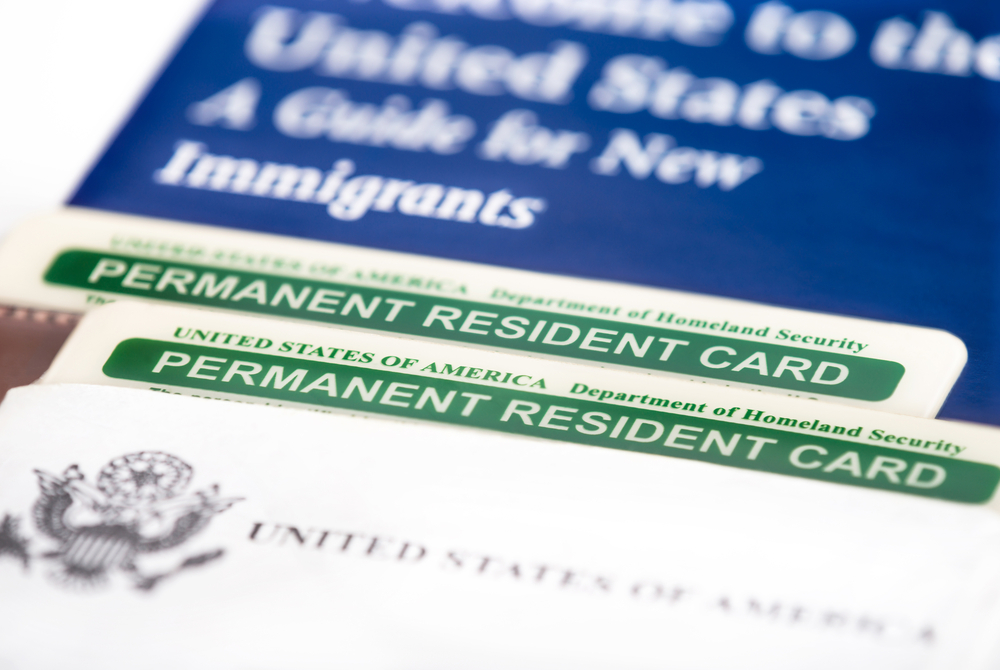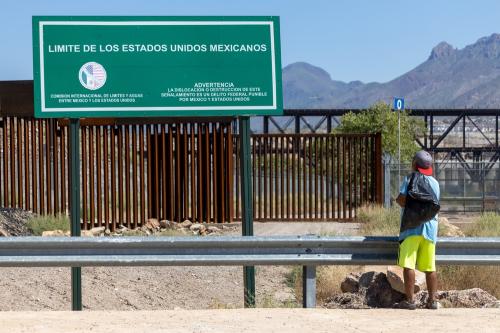Despite our collective decades of experience in immigration, our heads have been spinning. The immigration world is very much in flux as numerous court cases challenge Trump administration immigration changes, and COVID-19 has led to the rethinking of some established practices. For instance, the week before the inauguration, the Trump Administration announced a new compliance office to oversee STEM OPT (36 months of work authorization for international students in science, technology, engineering and math). At first there was fear – would the new enforcement effort discourage students from choosing the United States to study? An article in Forbes magazine the day before the inauguration wondered what tack the Biden Administration would take. Those interviewed hoped the new OPT oversight program could actually be used to send a strong message to international students, and provide much needed support and assistance to schools, students, and ultimately the employers seeking to hire them.
Following on this example, the Biden Administration can dramatically improve the employment-based immigration system in the United States, without help from Congress, based on specific strategies that we lay out below.
This article recommends specific actions that the Biden administration should take to support employment-based immigration that do not need congressional action. In drafting, we noticed that: (1) many others had written on this general topic, ranging from simple bullet points to long discussions; and (2) structural change will lead to longer-term improvements more than individual actions.1 Specific recommendations are a moving target, and one more reason why we focus instead on structural changes to help our economy attract and retain needed international essential workers. While humanitarian and family immigration categories may deservedly take much of the initial immigration attention of the Biden administration, employment-based/student immigration is particularly important for economic growth. As the Biden Administration is facing demands from many stakeholders on how to reform the immigration system, we reviewed plans from 14 organizations published after the 2020 election to help focus the discussion on employment-based/student immigration. We found four trends and present them here: (1) remove impediments to immigration; (2) improve the predictability of the immigration system; (3) resume the use of discretion by immigration officers; and (4) expand customer service. Those 14 plans are linked below with summaries, and we believe they align with the general Biden immigration goals. It is our hope that positive changes in this policy area will occur, particularly as the majority of Americans support legal immigration.
We have chosen to include in this analysis F and J visas for international students and scholars, even though they are not technically part of the employment-based immigration categories. International students face hurdles to work in the United States after graduation, even though many studies demonstrate the economic value of international students and scholars. Just recently, the National Center for Science and Engineering Statistics noted that forty percent of doctoral degrees awarded in science and engineering last year went to temporary-visa holders, and former UN Ambassador Samantha Powers argued in Foreign Affairs for using the U.S. immigration system to promote ‘academic excellence.” Forbes magazine has recently taken the same approach we do in grouping employment-based visas and student visas in looking forward to the Biden agenda.
Jump to a proposal
- Remove impediments
- Improve predictability
- Discretion for immigration officers
- Expand customer service
Remove impediments
The Trump administration has decreased legal immigration and created hurdles to make case processing more difficult. These impediments have slowed processing times, increased requests for evidence (RFEs) and denials, and placed an undue burden on immigrants who wish to live and work in the United States. The destabilization created by constantly changing rules and requirements has significantly decreased employment-based immigration.
Consider, for example, a first-year engineering student invited by her professor to get involved in the professor’s startup company that is developing a new medical device. That is much harder than it sounds, and often the subject of calls to immigration lawyers. As discussed below, the limited types of student work authorization are all meant to piggyback on a class, and do not allow work through school for a private company. But entrepreneurs learn by practicing – getting involved in real startups, which is why impediments to that kind of experience can and should be removed.
There are a number of ways the new administration can roll back these requirements to reduce the “border wall that no one can see.” Removing unnecessary impediments should be national policy at the relevant agencies that oversee immigration, including the Departments of Homeland Security, Labor, and State. Here we review some specific examples of how removing impediments could streamline immigration petitions and support employers in using existing visa categories to sponsor needed workers.
Student work authorization
The benefits of retaining foreign-born students in the United States are unmistakable. Attracting foreign-born students to study in the United States improves the nation’s prominence in academic research and innovation and requires that students be able to work in the United States during and after their program. Foreign students are eligible to apply for 12 months of Optional Practical Training (OPT) with an additional 24 months available to those who are in the STEM fields (STEM OPT). OPT adjudication is inconsistent, with receipts often delayed and even further delays with final decisions. Many employers are not able or willing to take the risk of hiring a foreign worker until they have their OPT work authorization card (or in the case of STEM OPT, receipt) in hand. U.S. Citizenship and Immigration Services (USCIS) should commit to creating an online application process for OPT to ensure a clear filing date. Further, USCIS should return to the 90-day adjudication time frame for all EAD applications, which was rescinded in January 2017. At the time, the idea was to prioritize work cards that are not automatically extended by filing an extension, but that has not happened.
Another example is the framework of international student employment categories that was developed decades ago to prevent students from using F-1 status as a backdoor to working. The classic example was a student who barely went to class and worked in a restaurant every day. Education should be the primary activity on a student visa. Now, with increasing options for experiential education and internships, the student visa keeps international students from opportunities that domestic students have. Consider an innovative, interdisciplinary engineering and business class where students design a product and establish a company to produce, market, and sell the product. International students are stuck trying to squeeze this opportunity into curricular practical training (CPT) or using some of the limited OPT, leaving less time after graduation. Current CPT regulations and guidance leave many gray areas and unanswered questions. Colleges and universities use a wide range of CPT options as a result. DHS should review CPT top to bottom for ways to make it align more with modern education practice and in particular to support entrepreneurship on campus.
Travel
Travel restrictions create a major impediment to employment-based immigration and international students. Even after completing immigration processing in the United States and at a U.S. consulate abroad, the overlay of travel restrictions prevents workers from getting to work and students from getting to school. Bans based on country of origin, such as the travel ban affecting those from majority-Muslim or African countries which Joe Biden reversed in his first days in office, should be avoided in the future. And COVID-related bans should be screened for public health validity. Most of the 2020 COVID-related bans have not changed since the early months of the year, including widespread bars to travel from Europe, the United Kingdom, China, and Brazil, while the virus has ebbed and flowed in those countries. There have been court challenges to these bans, but the decisions affect only the named plaintiffs, leading to inequities on who can make it here. Travel bans almost inevitably go to court, so they should be carefully considered and drafted to avoid the back and forth. Travel restrictions may be necessary to protect public health, but they should be narrowly tailored, and regularly updated.
Nonimmigrant visas
Requests for Evidence (RFEs) are USCIS’s way of asking questions or challenging an assertion in an immigration petition. They are a normal part of the application process and a way of clarifying points raised. But they have become more numerous and onerous. This needs to be reversed. RFEs have increased 78 percent in the last five years. This trend began before the Trump Administration, but has accelerated since 2016. The standard of proof is “preponderance of the evidence,” meaning “the [petitioner] must prove it is more likely than not that each of the required elements has been met.” Some immigration adjudicators stray into the higher criminal standard of “beyond a reasonable doubt.” One of the primary and immediate changes that would decrease processing times would be to ensure that all requests for evidence and denials are consistent with the appropriate standard of proof.
In addition, most employment-based immigration petitions for temporary work status (H-1B, L-1, etc.) or permanent residence, are filed on paper through the mail. RFEs are then sent back by mail. There is a Premium Processing (expedite) service that recently nearly doubled in cost to $2,500. USCIS does not use email but generally sends RFEs by fax (although at least one USCIS Service Center no longer faxes). With slowdowns this year at the US Postal Service, RFEs can cause a month or more of delay. The increase in and delay from RFEs makes planning for hiring and retention more difficult. To ensure consistency and reduce processing time, RFEs should be tailored to the evidence presented, and be detailed enough so it is clear how to respond. USCIS should also email RFEs.
In a 2017 memo, based on guidance from 2004, USCIS ended a long-standing policy of deference to prior adjudications for nonimmigrant statuses (temporary work categories). In practice then, every H-1B filed for an applicant, even extensions for the same position and individual, are adjudicated as if it is the first time. This results in an excessive amount of unnecessary paperwork to prove what has already been proven. The new administration should reinstate the prior deference policy.
Dependents of temporary foreign workers have suffered with policies that drastically increase processing times – supporting and retaining key foreign workers requires providing support for their spouse and children. Before March 2019, USCIS as a courtesy would expedite a dependent’s applications if the primary petition was premium processed. In other words, if a company paid the premium processing fee for an H-1B petition for a foreign worker, and her family’s H-4 application was in the same envelope, USCIS would adjudicate the H-4 and the H-1B at the same time. Since March 2019, H-4s have been decoupled from H-1B adjudication. That change instantly resulted in dramatically increased waiting times for dependents, and, by extension, any work authorization available for dependents.[2] Moreover, delays in getting dependent status approved affect other government benefits such as driver’s licenses.
Further, starting in February 2019, USCIS began requiring a biometrics fee and appointment for all dependent applications. This has further stressed the system and resulted in unnecessary delays. In the past, USCIS could require additional security checks if there was a specific concern, but biometrics was not the norm. Biometrics appointments are scheduled about three-to-four weeks in advance, which may mean having to find child care or take time off work, and can involve long drives to a USCIS Application Support Center.
Re-coupling H-4 and H-4 EADs to the primary applicant’s H-1B when using premium processing would reduce wait time and decrease the chance of gaps in employment authorization. Removing the unnecessary biometrics requirement would further reduce processing times.
Permanent residence applications (also known as “green cards”)
Prior to 2017, adjudicators would conduct green card interviews only when deemed necessary or for quality control. Common factors included previous arrests or being a citizen of a country designated a state sponsor of terrorism. Beginning October 1, 2017 USCIS requires all green card applicants to attend an interview. There has been some scaling back of this requirement due to the COVID-19 pandemic, but the majority of applicants still must attend in-person interviews. All green card applicants are called in for biometrics, so that their identity is confirmed. Restoring discretion to adjudicators should be a key priority and would reduce wait times and burden on USCIS.
The Trump Administration has also added screening to show green card holders are economically “self sufficient.” USCIS has the right to deny a green card for an applicant who “is likely at any time to become a public charge.” To implement this, a new form, the I-944 Declaration of Self Sufficiency, has been added. For those in employment-based categories, this 18-page form and a corresponding list of required documents should be unnecessary.
Many employment-based green card cases go through a lengthy PERM Labor Certification or Outstanding Researcher process to document a full-time permanent job offer in the United States. Their position is confirmed at the green card stage via form I-485 Supplement J, Confirmation of Bona Fide Job Offer.
Consider a typical case, where a university sponsors a new assistant professor for a green card. The professor and her family would each have to spend several hours completing the I-944 form and collecting documents such as education evaluations and credit scores. There is no clear guidance on how the I-944 form will be adjudicated or what the presumptions are. Would a professor who used government benefits in graduate school when she had a baby, and now has a new job that pays a reasonable salary, succeed on the self-sufficiency test? The additional paperwork and document requirements are superfluous where the green card is based on an employment offer.
Moreover, the new administration should review immigration forms and petitions to remove questions that are not relevant to legal eligibility for the immigration benefit.2 We note in particular the I-485 Adjustment of Status application, the last step for most green card applications filed in the United States. That form has grown to 20 pages, with over five pages of yes/no questions that are confusing and intimidating, creating an unnecessary barrier to filing. An Information Collection Request through the Paperwork Reduction Act would be a good vehicle to streamline expanding immigration forms.
Additional recommendations to remove impediments.
Finally, here are some additional recommendations from various sources who have done work on this topic:
- Allow visa reissuance in the United States – Cato Institute
- Modernize and digitize the immigration application process – Obama administration
- Stop counting derivatives separately under family and employment immigration categories – Alliance of Business Immigration Lawyers
- Stop the blank space rejection policy – American Immigration Lawyers Association
- Rescind fixed-period of status regulation, restore duration of status – President’s Alliance on Higher Education and Immigration
- Clarify and expand dual intent for international students – President’s Alliance on Higher Education and Immigration
Improve predictability
A recent survey identified that maintaining student visa status and being able to work in the U.S. after graduation constituted one of the biggest problems for international students during the COVID-19 pandemic. Many international students expressed concerns about potential changes to employment-based visas and other programs allowing them to work in the United States, given how the Trump administration issued various proclamations and rules attempting to restrict H-1B and other work visas. This demonstrates how important it is for international students and scholars to have predictability.
Consider, for example, a medical resident training on a J-1 exchange visa to become a doctor. He gets married to a U.S. citizen and wants to travel to his home country to introduce his new spouse to his family and friends, but medical residents do not get much time off. If he needs to apply for a J-1 travel visa stamp in his passport at a U.S. consulate to return to the United States, he must have some predictability in the process. The resident may be less likely to choose the United States for training if vacations home carry a significant risk of delay in returning to the United States. We regularly see international students, trainees and scholars not leaving the United States during their program – maybe two years for an associates or masters, but perhaps seven years for specialized medical training, Ph.D., or postdoc.
Importance of predictability for agencies
Predictability is an important principle for agencies overall. It affords regulated parties the ability to know what the law proscribes so that they order their affairs in compliance with the law. Unpredictability diminishes the law’s knowability and transparency, eroding the fundamental principles of rule-of-law and putting agencies at risk of being rebuffed by courts for issuing rules that are arbitrary and capricious.
As a practical matter, unpredictability also makes agencies’ jobs harder by causing problems for industry compliance officers and counsels. It also makes it more difficult for them to effectively advise their clients on what the rule is, weakening industry compliance overall. Regulated industries want clarity and consistency so that they know what they can and cannot do. If the compliance officer or counsel answers to this question with “it depends,” companies will stop taking regulations as seriously and risk being liable for non-compliance to rules that were never clear in the first place.
Importance of predictability in immigration
For the same reasons, establishing and maintaining predictability is important in immigration. This is especially true for international students, whose decision to study in the United States often hinges on their ability to remain in the country to study and potentially work after graduation. Unpredictability surrounding this ability to remain in the United States would deter international students from deciding to study here with significant negative implications for US colleges and universities.
However, the Trump administration had instilled a significant degree of unpredictability for international students and their schools. For example, chaos ensued after ICE issued guidance in July 2020 disallowing F-1 students from taking entirely online courses in the United States. The rule prompted several schools and states to sue ICE for “stirring up uncertainty” by disrupting roughly one million international students in the United States on short notice. Although ICE later rescinded its guidance, international students continued to feel insecure about the uncertainty surrounding their visa status. Although there is a hint of the rule for Fall 2020 remaining unchanged for Spring 2021, as of mid-January ICE had yet to make an official announcement of its guidance regarding spring 2021, causing colleges to disseminate messages telling international students that they do not know for certain what spring 2021 will look like.
Besides such micro-level unpredictability that posed hurdles to students and schools preparing for school semesters, there has also been unpredictability on the macro-level adversely impacting international students’ decisions to study in the United States in the first place. For example, a September 2020 proposed rule eliminating duration of status for international students is expected to lead to a reduction in international student enrollment, as the rule would create uncertainty over students’ ability to successfully extend their duration of stay. The same unpredictability and its chilling effect on international student enrollment would result from rules requiring extreme vetting or establishing a presumption of fraud if an international student attempts to apply for an immigrant visa within ninety days of entry.
Because many international students want to work in the United States after graduation, unpredictability over rules governing their employment can also adversely impact students’ decision to study here. For example, an October 2020 Department of Labor rule increasing the prevailing wages for H-1B caused concern that the rule would virtually kill industries relying mainly on noncitizen workers and incentivize international students to seek employment in other countries with more favorable immigration policies.
In 2019, 87 percent of international students who did not enroll in a U.S. college indicated that the top reason for their decision was delays and denials in the visa application process. Moreover, 58 percent indicated the social and political environment, and 50 percent indicated problems securing a job in the United States after graduation as their top reason for not studying here. The lower interest from international students during the Trump administration raised concerns for schools and employers in the U.S., as the decline of international student enrollment cost the United States nearly $12 billion and over 65,000 jobs since 2016, in addition to losing out on other benefits of having international students in U.S. schools. Unpredictability in immigration not only hampers the agency’s ability to effectively and efficiently regulate but also hurts the United States as a whole by disincentivizing international students from studying and working here.
Proposed solutions
As a way to restore predictability, immigration agencies should go through notice and comment rulemaking instead of issuing interim final rules or guidance of major impact on short notice. This will not only help foster predictability, but would also help agencies as courts have overturned rules like the H-1B prevailing wages rule for failing to go through notice and comment. Immigration agencies can also promote predictability by laying out guiding principles and clear guidance, or implementing programs like the Trusted Employer program proposed under the Obama administration in 2014. Reconstituting the Homeland Security Academic Advisory Council could also improve predictability by having university presidents and educational experts advise DHS on immigration policies.
The Biden administration can improve predictability by first reversing various rules issued under the Trump administration that adversely impact international students and foreign workers and further reforming employment-based visa programs to provide more certainty to international students seeking to work in the United States after graduation. This includes promoting entrepreneurial immigration, as international students involved in entrepreneurial projects currently face uncertainty as to how much they can or cannot do under student visas and may not be able to secure work visas despite having innovative business ideas. The new administration will also evaluate temporarily suspending so-called “midnight” regulations published in the waning days of the Trump administration, and also ask Congress to consider using the Congressional Review Act to undo certain immigration regulations. This should all be a part of the administration’s broader efforts to restore the reputation of the United States as a country that welcomes international students.
The following organizations have provided more specific recommendations to achieve this goal:
- American Council on Education
- Association of American Universities
- APLU
- NAFSA
- President’s Alliance on Higher Education and Immigration (including recommendations regarding DACA recipients)
- World Education Services
Resume use of discretion in meritorious cases
Discretion has been a longstanding part of immigration processing as a way to excuse minor infractions. However, the Trump administration greatly reduced the use of discretion in immigration cases. The Biden administration should allow discretion to the extent allowed by statute and regulation. The standard for discretion clearly must depend on the situation — an applicant with a significant criminal issue or a pattern of misrepresentation would have a much higher bar to obtain favorable discretion. However, many of the infractions we currently see in visa and petition processing are what under the Administrative Procedure Act would be called harmless error, or what the Department of Labor calls “scrivener’s error.”
Consider for example: an 18-year-old student who uses an electronic signature when USCIS only allows a scan of a wet signature, or fills out a paper check incorrectly because she only knows Venmo. The rejection notice from USCIS will invite resubmission, and the student may not learn for months that the resubmission will be rejected if it is past the original deadline.
Immigration law is complex, second only to the tax code for length of administrative regulations and guidance. At schools sponsoring F-1 students or J-1 exchange visitors, the international advisers are often non-lawyers working to follow this complex guidance and keep up with new developments. They may inadvertently check the wrong box on a form, miss an expiration date or deadline, or submit the wrong version of a form. Such mistakes are rare, but they do happen.
The 1952 Immigration Act included a way to fix such mistakes called “nunc pro tunc,” for late requests to extend or change status. Current immigration regulations include nunc pro tunc for extensions and changes of status. USCIS reminded applicants of nunc pro tunc in April 2020 as a possibility for flexibility during COVID, but since 2017 we have not seen a nunc pro tunc request approved.
For example, consider a college student who was a dependent on her parent’s working visa, and the parent’s company makes a mistake on the petition to extend status. If the parent’s working visa is denied, the daughter’s extension request will also be denied. Let’s say the student is from Chile, has no family there, cannot afford an airplane ticket and is in the middle of a semester. In the past, the student could request a nunc pro tunc change of status to an F-1 student visa, explaining the situation and asking for discretion. Over the past three years, however, USCIS has usually rejected such requests.
We recommend issuing guidance, along the lines of the 2004 deference memo mentioned above, that formalizes the use of discretion for applicants where there is a simple clerical error with no pattern of mistakes. This would provide a streamlined alternative to travel or to avoid the cumbersome and lengthy process of reinstatement for students.
We also recommend issuing an Executive Order rescinding recent Executive Orders that limit discretion by adding an ideological overlay to adjudications that goes beyond the letter of the law, in particular the Buy American/Hire American (BAHA) and Extreme Vetting executive orders. A new Executive Order could cite legislative and regulatory history that international students, scholars and workers are of value to the United States, and that USCIS officers may exercise discretion on their behalf within the limits of the regulations.
The Executive Order could also revive and expand a 2005 memo from then Secretary of State Condoleezza Rice that called for reasonableness in evaluating the temporary intent requirement for F-1 international students. (The authors have previously argued for extension of the Rice Memo to J-1 exchange visitors.) In much more diplomatic terms, Secretary Rice basically said, “it’s hard to figure out the long-term plans of an 18-year-old” and “Trying too hard to do so will lead to inconsistent, subjective decisions.” The Rice memo is particularly important because nunc pro tunc requires compliance with the temporary intent requirement of F-1 student visas.
The new administration should also instruct USCIS broadly – as we have seen this year during the pandemic – to waive interviews and biometrics as appropriate or to allow modern technology such as electronic signatures or video interviews. The November, 2020 USCIS guidance narrowing discretion for green card applications is a step in the wrong direction. The new administration should review immigration forms and petitions to remove questions that are not relevant to legal eligibility for the immigration benefit.
Communication and customer service
The USCIS should revise its mission statement to reflect its name: immigration services, not enforcement. USCIS’ 2019-2020 Strategic Plan included some customer service goals, but that mission needs to be the focus of a top to bottom review. AILA’s 2018 Invisible Wall Report noted that USCIS removed “customer service” and “nation of immigrants” from its website in 2018.
One might assume that international students and workers might not need help, since many are highly educated and English speaking. However, with the complexity of immigration law comes a real need for customer service from benefits agencies such as USCIS. This is particularly true of lower wage workers, such as H-2Bs and H-2A temporary or seasonal employees, who may learn most of what they know from recruiters abroad. Temporary workers may not understand their rights, such as applying for a U visa based on an abusive work environment
As part of enhancing customer service, USCIS should take steps, including:
- Institute a learning agenda at USCIS to improve regulatory research and policy making;
- Broadcast an explicit message that the United States welcomes immigrants;
- Improve USCIS’s 800 customer service number by adding more agents and training them better;
- Add more supervisors to quickly answer complex questions;
- Send immigration notices and approvals via email or online, and allow petitioners to do the same;
- Speed up its efforts to make more forms available online;
- Reinstate regular liaison meetings with immigration stakeholders to learn about and address issues of common concern;
- Reinstate regular liaison meetings with other immigration agencies to provide coordinated and consistent advice on key immigration issues;
- Stop using instructions on immigration forms – which have the force and effect of a regulation under 8 C.F.R. § 103 – as an end run around formal notice-and-comment rulemaking under the Administrative Procedure Act;
- Issue draft policy guidance for comments, so that the final version of such guidance has a better chance of actually working;
- Speed up sending receipt notices, since employers and workers often need them to travel or for other reasons; and
- Speed up adjudications, so that employers, workers, and their families know more quickly whether their applications will be approved or denied.
Conclusion
All these changes will take time and money. USCIS is an agency funded by filing fees, and the new congressional authorization for a $2,500 expedite fee for many case types, if implemented strategically, could help. If the United States is to compete for the best and the brightest, these structural changes are necessary.
The authors did not receive financial support from any firm or person for this article or from any firm or person with a financial or political interest in this article. They are currently not an officer, director, or board member of any organization with an interest in this article.
-
Footnotes
- Former Department of Homeland Security Secretary Jeh Johnson did something similar in 2014, where he issued a memo with general structural goals for DHS and then some specific immediate ideas on how to move in those directions.
- Based on an interview with Erin Hustings, Co-Team Leader on the Immigration Hub‘s review of the citizenship process (on file with the author). The interview discussed ways to streamline the N-400 application for naturalization by eliminating questions that are not required to determine statutory eligibility (December 31, 2020).










